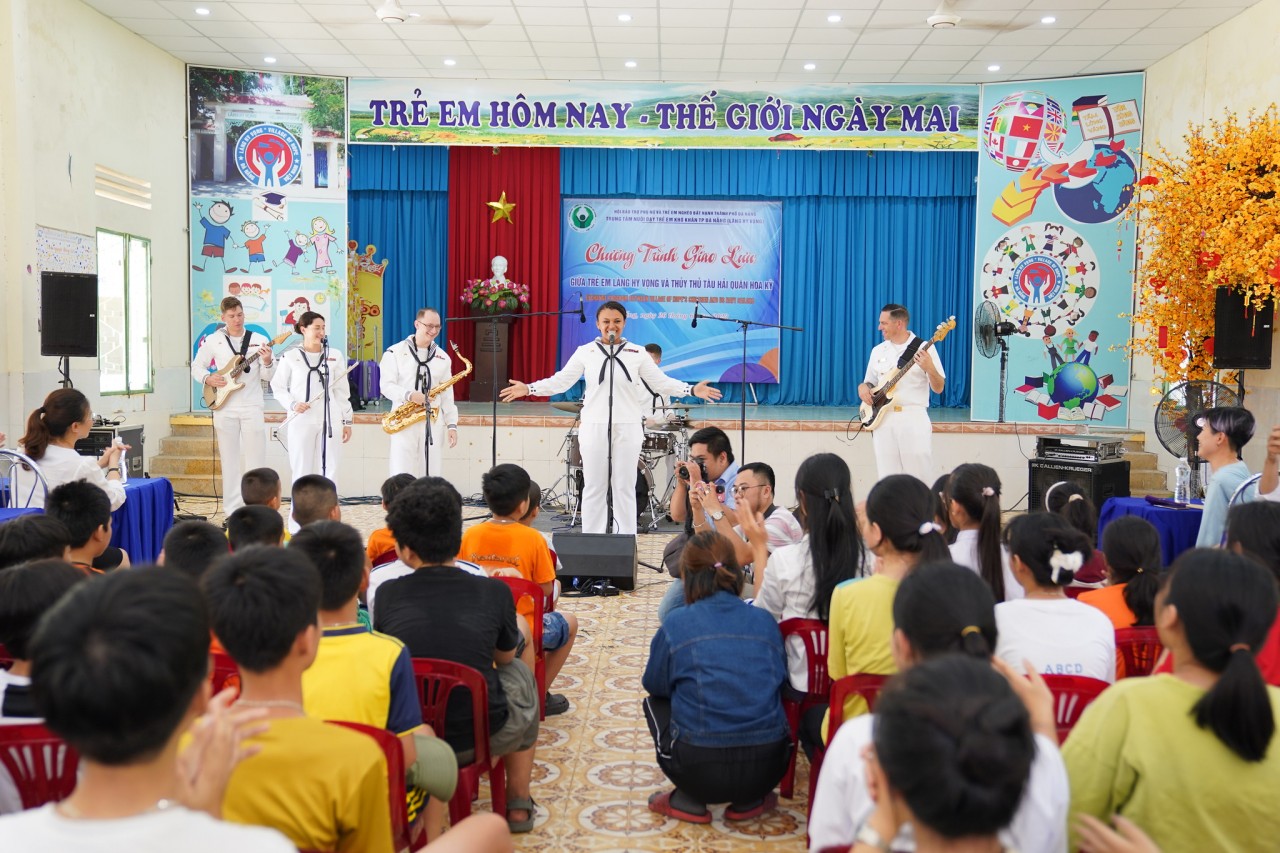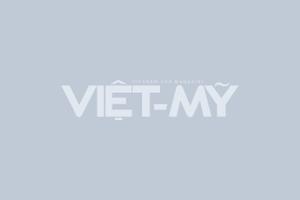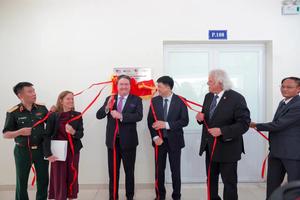Vietnam-U.S. cooperation: From healing the past to building the future
Tuesday, 11/18/2025 - 12:33 PM (GMT+7)
V.U.M - The Vietnam-USA Society (VUS) and the Vietnam Union of Friendship Organizations (VUFO) recently organized a seminar in Hanoi titled “Vietnam-U.S. People-to-People Relations: 30 Years of Diplomatic Relations and Looking Toward the Future.” The event was attended by Vietnamese diplomats, scholars, and American friends and partners.

The seminar "Vietnam-U.S. People-to-People Relations: 30 Years of Diplomatic Relations and Looking Towards the Future," attended by Vietnamese diplomats, scholars, and American friends and partners.
The seminar aimed to review the achievements of Vietnam-U.S. people-to-people cooperation over the past three decades and to discuss future development orientations.
In his opening remarks, Ambassador Pham Quang Vinh, President of the Vietnam-USA Society, emphasized that the development of Vietnam-U.S. relations today is the result of the persistent efforts and dedication of the people of both countries across multiple generations. In the new context, he noted, Vietnam-U.S. people-to-people relations need to be further deepened, serving as a bridge of friendship, understanding, and trust between the two nations.
Mr. Pham Quang Vinh referenced the remarks of VUFO President Phan Anh Son at the 80th anniversary of the Vietnam-America Friendship Association, highlighting three directions for promotion in Vietnam-U.S. people-to-people diplomacy: adhering to the Comprehensive Strategic Partnership framework and promoting people-to-people exchanges as a pillar of the bilateral relationship; expanding the network of friends and areas of cooperation, not only in humanitarian efforts and overcoming war consequences but also in education, culture, science, innovation, trade, the environment, and sustainable development; and promoting the Vietnam-U.S. reconciliation model—a testament to the power of sincerity, tolerance, and the aspiration for peace.
Cooperation in overcoming war consequences: The foundation of Vietnam-U.S. relations
At the seminar, Vietnamese and American delegates discussed various aspects of cooperation in addressing war consequences. According to Chuck Searcy, President of Veterans for Peace (VFP Chapter 160), American veterans were the first U.S. citizens to proactively connect with the people and veterans of Vietnam. These meetings, held in a spirit of reconciliation and friendship, opened the door to understanding, creating a foundation for humanitarian cooperation and healing the wounds of war. Through sincere experiences and empathy, the two sides built friendship, trust, and mutual respect—values that form the solid foundation of Vietnam-U.S. relations today. He expressed his belief that the two countries will continue to cultivate peace and a better future for generations to come.

Mr. Chuck Searcy, President of Veterans for Peace (center), speaking at the event.
Hoang Anh Tuan, Head of the International and Science Department of the Vietnam Association for Victims of Agent Orange/Dioxin (VAVA), stated that Vietnam and the U.S. have implemented many humanitarian programs and projects. Programs supporting Agent Orange victims and improving the lives of people with disabilities in dioxin-contaminated areas—through rehabilitation, livelihood support, and community integration—have helped tens of thousands of people overcome difficulties and improve their lives. He noted that VAVA wishes to continue strengthening cooperation with U.S. agencies, organizations, individuals, and international friends to expand the scale and enhance the effectiveness of support activities.
Le Cong Tien, Deputy Director-General of the Americas Department (Ministry of Foreign Affairs) and Director of the Vietnam Office for Seeking Missing Persons (VNOSMP), said Vietnam has cooperated with the U.S. in humanitarian activities, searching for and accounting for American servicemen missing in action (MIA) in Vietnam for over 50 years. This has helped identify and return the remains of thousands of U.S. service members to their families. The MIA activities were once a rare channel of dialogue during the embargo period, contributing to the foundation for the normalization and establishment of diplomatic relations.
He stressed that in the future, Vietnam and the U.S. will continue to cooperate closely in this field, not only to heal the wounds of war but also to strengthen trust, expand cooperation, and bring practical benefits to the people of both nations.
Proposals for cooperation across multiple fields
At the seminar, Ambassador Nguyen Phuong Nga, former Deputy Minister of Foreign Affairs and former President of VUFO, stressed that Vietnam-U.S. people-to-people diplomacy needs to attract greater participation from youth and expand to include various social classes, such as business representatives, writers, and artists. She proposed promoting more creative forms of cooperation, such as organizing seminars and Vietnamese literature, film, and music weeks in the U.S., and vice versa, thereby increasing understanding, sharing cultural values, and narrowing differences between the people of the two countries.
According to Ambassador Nguyen Phuong Nga, in the context of Vietnam aiming to become a developed country by 2045, expanding cooperation with the U.S. in economics, trade, science, and technology is significant. Alongside the positive results in humanitarian projects and addressing war consequences, the two sides need to further boost cooperation in high technology and innovation.
In the era of artificial intelligence, she added, people-to-people diplomacy must be innovated in content and form, effectively leveraging online platforms and digital media to spread activities to the general public, especially the youth.
VUS Vice President Bui The Giang remarked that amid a volatile global situation, Vietnam-U.S. people-to-people exchanges must be maintained and developed more strongly, not only in scale but also in quality and effectiveness. According to him, people's organizations in both countries need to promote flexibility and creativity, while applying digital technology and artificial intelligence in exchange activities, human resource training cooperation, and knowledge and experience sharing.
Mr. Bui The Giang proposed several priority areas for cooperation. He emphasized the need to leverage the role of the Vietnamese community in the U.S. as a creative resource and an important bridge in the bilateral relationship. He also called for strengthening people-to-people cooperation in overcoming war consequences, especially addressing issues of Agent Orange, unexploded ordnance, and searching for missing service members. Simultaneously, he urged for the expansion of cultural, artistic, sports, tourism, and educational exchanges to spread humanitarian values and enhance understanding between the people of both nations.

An exchange program between children from the Village of Hope and U.S. Navy Sailors in Da Nang City. (Photo: U.S. Embassy in Vietnam)
From the perspective of American people's organizations, John McAuliff, Director of the Fund for Reconciliation and Development (FRD), identified four potential areas to promote Vietnam-U.S. people-to-people exchanges. He stated that strengthening introductory programs about Vietnam for American social activists, civil society organizations, and students in fields such as the environment and community development, in cooperation with Vietnamese partners, will contribute to building a sustainable foundation of friendship.
Mr. McAuliff proposed expanding opportunities for domestic and international tour operators to participate in short thematic programs on Vietnamese history, economy, and culture. He also expressed hope that in the future, Vietnam and the U.S. will promote "sister" relationships between localities, thereby gradually forming an extensive exchange network, expanding professional cooperation, and cultural, economic, and educational exchanges, creating more opportunities for students from both countries.
Nhat Minh




